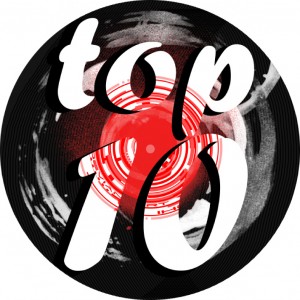10. Osheaga Music and Arts Festival; Montreal, Quebec, Canada – Of course, this list wouldn’t be complete without the mention of our own Osheaga Festival right here in Montreal. Held every year in Jean Drapeau Park on beautiful Ste-Hélène Island, Osheaga has been bringing together musicians, artists, and music and art lovers since 2006. Although the annual summer festie doesn’t boast on-site camping, festival-goers build a sense of camaraderie through the commute from downtown to the park via shuttle, bicycle or footmobile.
9. Exit Festival; Novi Sad, Serbia – Exit Festival keeps people up all night long with big name acts like Iggy Pop, the Beastie Boys, Snoop Dogg, M.I.A., Deadmau5, Portishead, Wu-Tang Clan, Bad Religion and tons more. What makes Exit different from other festivals? Firstly, it began as a student-initiated project against the Milosevic regime in 2000. Secondly, it has been hosted at the beautiful Petrovaradin fortress since 2001, and finally, the music doesn’t start until late at night, with musicians performing until dawn.
8. Rock al Parque; Bogota, Colombia – As one of the longest established festivals on this side of the Greenwich Meridian, this Colombian festival has been, well, rocking the park for 17 years. With that kind of longevity, you know it’s got to be good. The festival’s international and inter-genre flair sets it apart from other festivals that boast more mainstream or specialized genres. The three-day-long festie has hosted musicians from France, the Netherlands, Germany, Peru, Jamaica, El Salvador, Spain, the U.S. and plenty more.
7. SXSW Music Conference and Festival; Austin, Texas, U.S. – If finding new, emerging and upcoming music is your schtick, then SXSW is, hands down, the festival for you. For five days, over 2,000 musicians take over practically every venue available in Austin to showcase their talents for the festival’s 45,000 patrons, 2,941 media members, as well as an undisclosed number of industry bigwigs. In addition to non-stop live music, SXSW also holds musician workshops and conferences, and features big name speakers like Nas and Bruce Springsteen.
6. Big Day Out; Australia and New Zealand – This multi-city festival goes on tour every January, hitting up Auckland, Gold Coast, Sydney, Melbourne, Adelaide and Perth between the last week of January and the first week of February. Taking place in prime southern hemisphere summertime, the festival secures huge acts like Kanye West and Soundgarden, who, no doubt, are drawn to the festival to escape the cold and soak up some of that warm, golden Australian sun with up to 50,000 festival attendees.
5. Burning Man; Black Rock Desert, Nevada, U.S. – Burning Man is the most elusive festival in North America—maybe even the world. This week-long arid experience is so much more than a music festival, with many attendees left unable to explain their time at Burning Man. It’s more like an experiment that happens to include some amazing music and art. The temporary community is built upon “radical self-expression and radical self-reliance” with each year dedicated to a different theme (2011’s was “Rites of Passage”). There are no rules, and money is of no value. At the end of the festival, a giant effigy of a man is burned to the ground, hence the name of the festival.
4. Sasquatch! Music Festival; George, Washington, U.S. – Held every year in the awe-inspiring Gorge Amphitheatre on the Columbia River, Sasquatch! Music Festival’s four stages are graced by some of the biggest names in music. Foo Fighters, Death From Above 1979, Modest Mouse, the Flaming Lips, Kings of Leon, Nine Inch Nails and countless others have played during the four-day long festival, but tons of indie bands get their beginnings there, too.
3. Coachella Valley Music and Arts Festival; Indio, California, U.S.– As one of the largest outdoor music festivals in North America, you’d better believe Coachella is a damn good time. While camping at the festival is the most popular (and arguably the best) way to experience Coachella, those who can’t live without their hair straighteners and who prefer to have daily showers also have the option of shuttling into the festival grounds from nearby Los Angeles. The festival is held over two weekends every April, so if one weekend doesn’t work for you, then you can catch the same acts the next weekend—or why not go to both?
2. Bonnaroo Music and Arts Festival; Manchester, Tennessee, U.S. – So, I’m a little biased in placing this festival so high on the list—after all, I did meet my significant other here and if you ask me, I’ll tell you that my time at ‘Roo changed my life. Literally. Located in the heart of Tennessee, a mere 90 minutes from Nashville, Bonnaroo is an epic experience of music, art and community. With 80,000 campers, over 100 acts, including stand-up comedians, on more than 10 stages spread over 700 acres of lush Tennessee farmland, Bonnaroo will soon become your gospel.
1. Glastonbury Festival of Contemporary Performing Arts; Pilton, Somerset, U.K.– Although the beloved Glastonbury is not happening this year, its triumphant return is scheduled for 2013, and rightly so. As the largest outdoor music festival in the world, this festival has been rocking the masses since 1970, the day after Jimi Hendrix died. With over 40 years in the game, dozens of stages and upwards of 140,000 attendees, Glastonbury is the festival of all music festivals.
